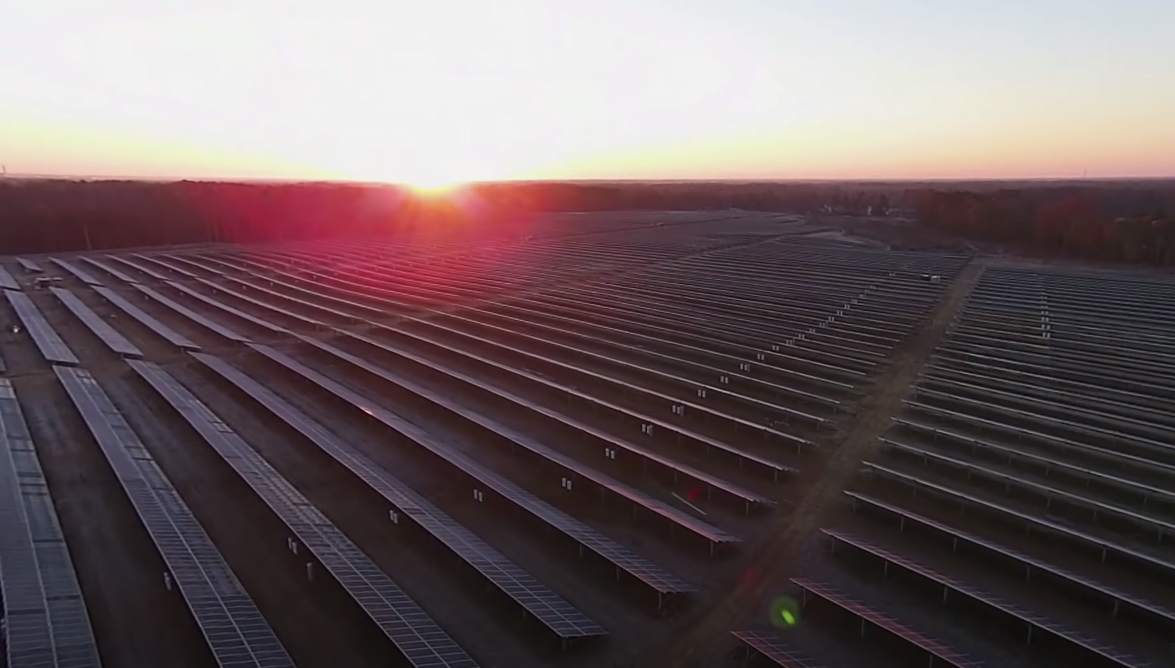The number of SPPs around the world is increasing by about 20% per year. Their overall productivity and popularity among businessmen and the population is growing even faster. To understand why a solar power plant is becoming a serious competitor to fossil fuels, you need to start with what kind of complex it is, how it works and how profitable it is to operate. Our article is devoted to a detailed analysis of these issues.
What is a solar power plant
Any solar power plant is a specialized set of equipment capable of capturing the electromagnetic radiation of the sun and converting it into thermal or electrical energy.
For this, different technologies were used, which were improved over the years.
The earliest known method made it possible to obtain energy due to a temperature difference in a sealed transparent tower. It was used on French farms as early as the 19th century.
The next technological solution was a system of mirrors placed in concentric circles around a high central tower, on which a coolant tank was installed. Focusing the beams from each mirror heated the tank to temperatures from 500 to 700°C. The coolant turned into superheated steam, which was transferred to the turbine blades. Unfortunately, efficient installations of this kind required huge areas, and it was impossible to install small home solar power plants in this way.
Much more progressive and promising are modern solar power plants based on photovoltaic solar panels. The theoretical efficiency of such installations can reach 80%, and their size can range from a miniature battery on a belt to huge farms covering hundreds of square kilometers.
In this regard, further we will consider only stations that generate energy using photovoltaic batteries.
How a solar power plant works
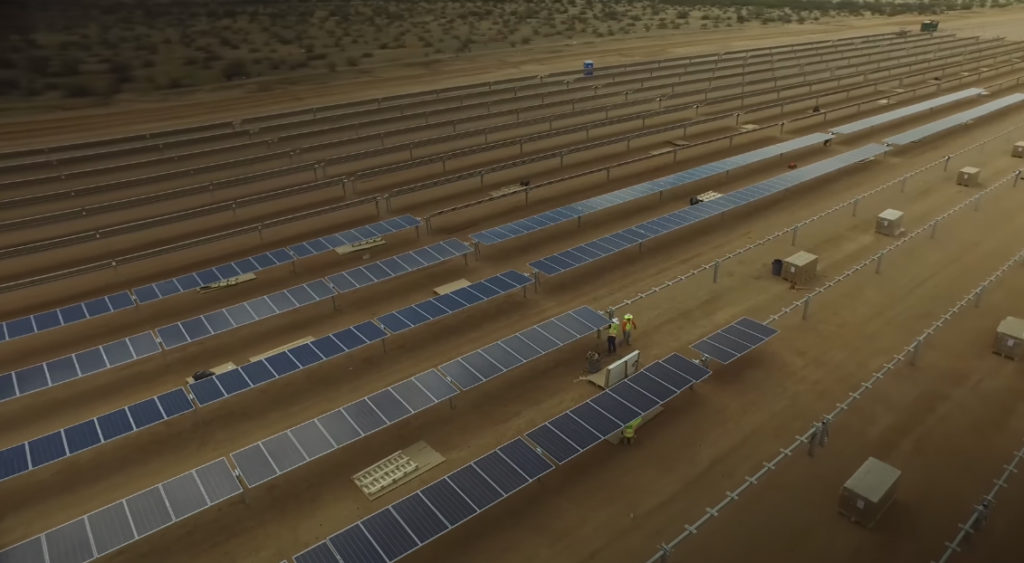
The main elements of SES are:
Helio modules (solar batteries)
Each of them is a set of semiconductor cells stacked in rows on a solid foundation. From above, the module is covered with a particularly strong transparent glass, and the current is transmitted through conductive strips.
In most cases, the ends of the panel are protected by an aluminum frame, however, there are models created using frameless technology. In large solar power plants, modules can be combined into groups, connecting in one of three ways:
- consistent;
- parallel;
- mixed.
Thanks to this solution, it is possible to obtain any, predetermined, current strength and its voltage at the output.
The number of photovoltaic cells in one solar panel for a home is usually a few dozen, although there are options with hundreds of cells. The cells themselves are created using various technologies related to the characteristics of semiconductor materials. The most common of these are:
1. Monocrystalline silicon Mono-Si . Panels based on it are ideal for southern roof slopes and land plots, where it is possible to direct the working surfaces of the batteries directly to the sun. The maximum efficiency of such panels is 22-24%, but when the lighting conditions deviate from the ideal, it quickly decreases.
2. Polycrystalline silicon Poli-Si . It is used in places with a moderate level of solar insolation. Its somewhat lower efficiency than that of single crystals (16-20%) is compensated by the average annual increase in productivity due to a not so significant drop in efficiency when exposed to unfavorable factors.
3. Cadmium telluride CdTe . A rare earth composite that allows flexible thin-film batteries rather than rigid ones. Even less sensitive to tilt angles, cloudiness, scattered light and temperature changes.
4. Expensive rare earth elements – gallium, germanium, indium . They are mainly used in modules where the question of how much energy a solar power plant produces is more important than its cost. The main buyers of panels of this type are companies operating in the aerospace industry.
inverters
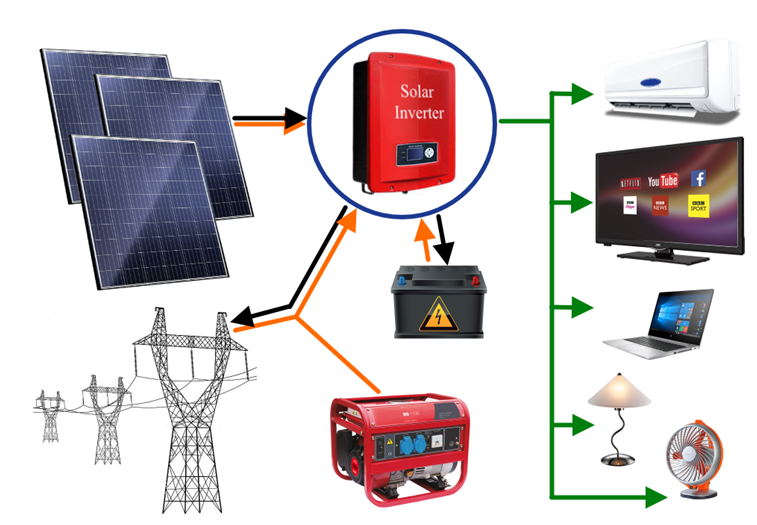
The second most important element of any solar power plant is a device called an inverter. Its presence in the circuit is necessary, since the batteries generate direct current, and AC is used in the power grid. This is exactly what the inverter does.
Depending on how the solar power plant will work – autonomously, in tandem with the network or mixed, an inverter of the appropriate type is purchased. The device is connected with exact polarity between a group of current-generating modules on the one hand and all other elements of the system on the other.
When choosing an inverter, they are guided by the following important characteristics:
input voltage value;
- maximum and rated power;
- consumption without load;
- the shape of the output current (a pure sine wave is considered ideal);
- weight of the device;
- the presence of a fan and its functionality;
- a set of protection mechanisms;
- efficiency;
- the presence of a standby mode;
- operating temperature range.
Charge controllers
Required only in industrial or domestic solar power plants using batteries for charge storage. There is a wide range of controllers on the market that differ significantly in functionality, quality and durability.
The most common:
- pulse-width PWM (Pulse-Width Modulation), modulating the current with sufficient quality and charging the battery by 100%;
- intelligent MPPT (Maximum power point tracking for low power photovoltaic solar panels) – more expensive, but pays off at large stations due to 30-35% greater efficiency;
- hybrid – mainly used at stations where a solar SEM and a wind wind farm work in tandem.
The choice of controller depends primarily on the overall power, performance and cost of the power plant.
AKB – rechargeable batteries
Any solar power plant for a home or a summer residence, which is planned to operate around the clock, incorporates batteries. In the presence of the sun, an excess of generation accumulates in them. In its absence, the energy stored in the battery is returned to the network.
Depending on the needs and financial capabilities of the owner, one of the following types of batteries is selected for the station:
| AGM, lead acid | GEL, gel-based | Li-On – based on lithium oxides | |
| Service life, years | 5-10 | 15-20 | 10-20 |
| Charge/discharge, 100% | 200 | 150 | 6 500 |
| Charge/discharge, 50% | 350 | 550 | 23 000 |
| Charge/discharge, 30% | 800 | 1 200 | 50 000 |
| Temperature range, °C | +15 / +25° | +10 / +35° | – 30 /+60° |
| Environmental Safety | low | average | high |
In addition, lithium batteries have a 5 times lower specific gravity per unit of energy density.
Periphery
The main elements of a solar power plant cannot be combined into a single system without periphery. When asked what it is, they usually refer to connecting cables with MC4 connectors, as well as mounting structures for SES of all kinds.
The general requirement for peripheral materials is their reliability, durability and resistance to adverse weather conditions.
Sometimes various electronic units and boards are recorded in the same category – components for various equipment of solar power plants, which must be replaced if necessary.
How a solar power plant works
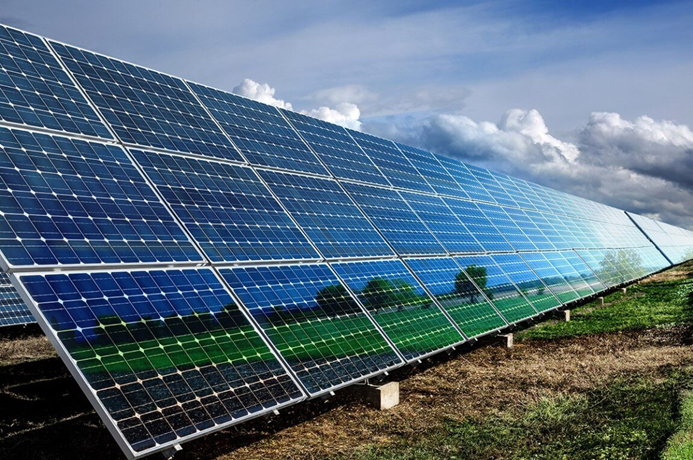
The functioning of such systems is based on the principle of the photoelectric effect. It consists in the following:
- photon flux falls on the surface of solar panels;
- light of a certain wavelength – mostly visible and partly UV and IR radiation – is absorbed by a layer of silicon or rare earth materials;
- in the working layer of cells, the so-called p / n-conductivity occurs, as a result of which photons knock out free electrons from semiconductor atoms;
- their flow is a direct electric current, which is sent to the inverter along the conductive paths;
- from there, an alternating current with a voltage of 220V is sent to the consumers and the battery, which is used for various purposes.
In off-grid solar power plants , all generated energy remains in the system. Part of it goes to consumption, feeding a variety of electrical appliances, lamps and other electrical equipment. The other part is stored in the battery to maintain consumption at the same level at night and in cloudy weather. How much such a solar power plant will cost depends on the needs of the owners. For a country house, a SPP of 10-20 kW will be optimal. At a temporarily visited dacha, 3-5 kW may be enough.
The task of network options for SES is somewhat different. How does a grid solar power plant work? It is connected to centralized power networks, and its circuit contains a multi-tariff meter. This allows both to receive part of the missing energy from the grid, and to sell excess generation to the state at the “green tariffs” fixed by law. Since the latter in Ukraine are quite high, the owners of such SPPs seek to install the maximum possible capacities that bring high profits. Batteries are not provided in such systems.
The hybrid type of solar power plants combines the capabilities of the first and second class solar power plants. Such installations can operate autonomously or in the mode of receiving / returning electricity from external networks. For them, the unit price of a kilowatt of power is maximum, since the design must include all the basic elements necessary for the first and second types of stations.
How much does a solar power plant cost
The main factor affecting the cost of a solar power plant is its future total capacity. Taking into account the costs of installation, commissioning and paperwork, it ranges from $0.8-1.0 per 1 kW. The floating price range is formed due to secondary factors – “branding” and the quality of equipment and the complexity of installation work.
The cheapest option is to buy used equipment from Europe. The disadvantage of such an acquisition is obvious, and is associated with the impossibility of an objective assessment of the real efficiency of the station and the remaining service life of the panels.
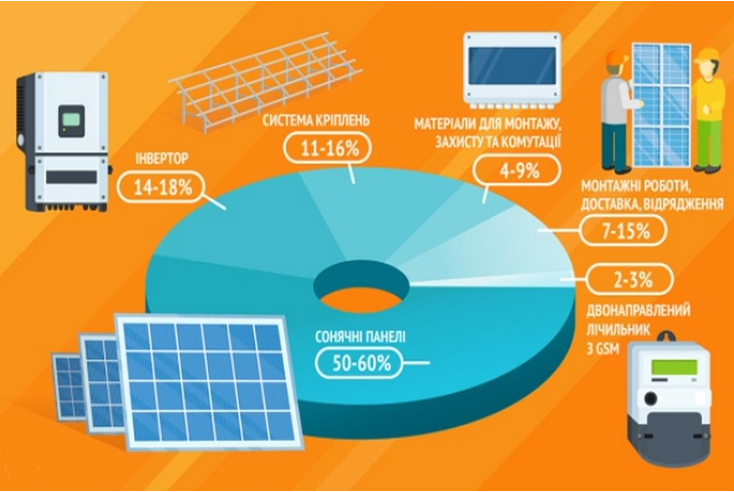
The second in terms of costs is the purchase of budget components from little-known Chinese firms. Their equipment is 20-30% cheaper than batteries, inverters, accumulators and peripherals from companies from the world famous TIER-1 Bloomberg rating, but inferior in quality and durability.
Therefore, before buying, experts advise considering only the third option and base the calculation on how much a solar power plant for a home from trusted manufacturers will cost.
Here are some of the most requested examples.
1. How much does a 5 kW solar power plant cost
Approximately you will need to purchase the following kit for the cheapest network SES:
| Accessories | Qty | Price , $ |
| Panels 250-275 W | 18-20 | 1800-2200 |
| 5 kW inverter | 1 | 700-900 |
| Electronics and Peripherals | 700 | |
| Total : | ~ 3500 |
Taking into account the cost of turnkey commissioning, which will include the registration of the “green tariff” and the multi-tariff meter with ASKUE, the total amount will be approximately $ 4,800 .
An autonomous station will cost a little more, since it will require inclusion in the list of high-quality batteries, but the exclusion of the meter from it and the issuance of permits for the “green tariff”.
2. How much will a 10 kW solar power plant cost
The principle of calculation here is almost the same. You will need to purchase:
| Accessories | Quantity | Cost, $ |
| Panels 250-275 W | 36-40 | 4000 |
| 10 kW inverter | 1 | 1400 |
| Electronics and Peripherals | 1300 | |
| Multi tariff meter + installation | 1400 | |
| Total: | ~ 9100 |
3. How much does a 30 kW solar power plant cost
There is no need to make any fundamental changes in determining the total cost of such a second, more powerful SES. However, the following consideration must be taken into account.
For such a station, more than 100 batteries of 250-275 watts, or about 200 square meters, will be required. meters of free space. Replacing with more productive 300-400 watt panels will save some space, but the southern slopes of the roof of even a large house may not be enough. Therefore, it will be necessary to consider the option of installing on the ground. But the area of the free site will have to be almost doubled in order to prevent the shadow from some obliquely installed modules from falling on other, neighboring ones.
If this is not a problem, you will need to allocate about $25-26 thousand, or almost UAH 700 thousand, for the purchase.
However, the payback of such a solar power plant will not exceed 5 years, and then it will begin to bring a constant income of more than $4,000 annually.
How much does a solar power plant generate
For example, consider a variant of SES with a capacity of 5 kilowatts, and then we will carry out a simple multiplication of the results obtained for stations by 10, 20 and 30 kW, respectively.
5 kW
A solar power plant of the specified capacity will be able to generate in a year:
- an average of 6-6.5 MWh per year;
- minimum 160 kWh in winter months;
- maximum 750 kWh in summer.
With the help of special online calculators for solar power plants, it is easy to calculate that, minus the energy consumption of the equipment itself and according to the current “green tariffs”, the payback period will be 8.5 years. All subsequent years you will receive from 500 to 600 dollars of net profit.
Important! When calculating, you should take into account the correction for the level of solar insolation of the installation site for each region of Ukraine.
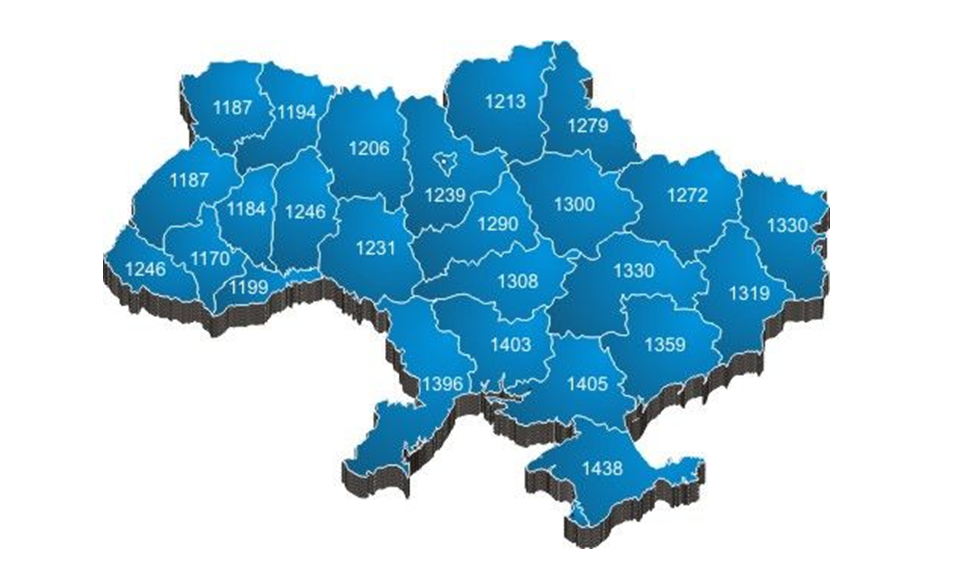
Thus, even a relatively low-power 5-kilowatt home solar power plant can be used as a business.
For network SPPs of 10, 20 or 30 kilowatts, all the above figures will simply need to be multiplied by 2, 4 and 6, respectively.
Install solar power plants and enjoy all the benefits of clean energy!
